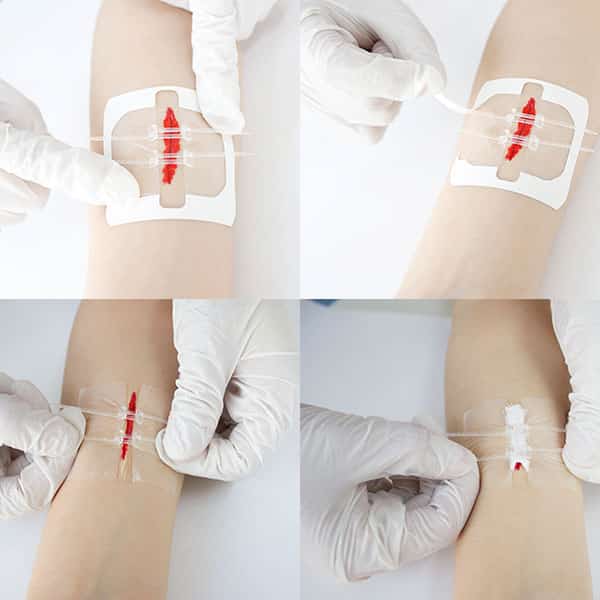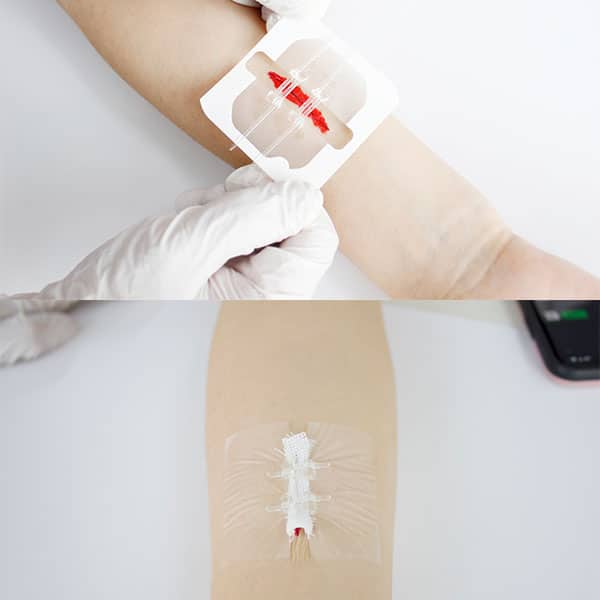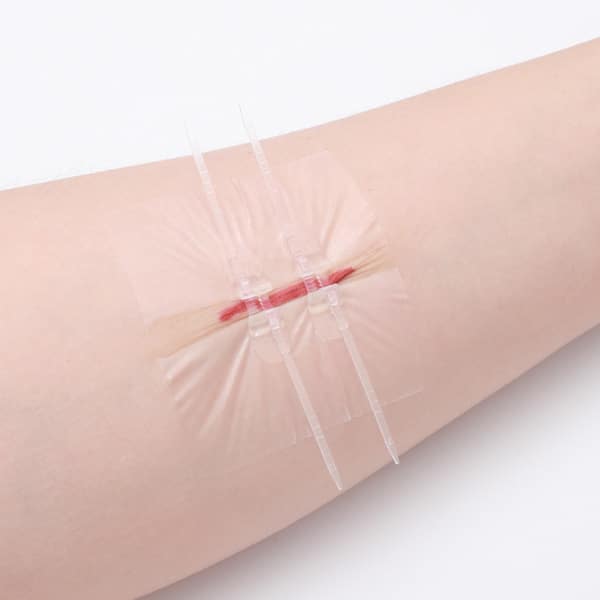- No.277 Shuangshan Road,Deqing,Zhejiang,CHINA
- [email protected]
- WhatsApp+8613065722186
Band Aid Longmed Wound Closure Strips
Band Aid is a brand name for a type of adhesive bandage used for covering and protecting minor wounds or injuries on the skin. The term Band Aid is often used generically to refer to any adhesive bandage.
A typical Band Aid consists of several components:
Adhesive Strip: The part of the bandage that sticks to the skin to keep it in place.
Absorbent Pad: The central part of the bandage that covers and protects the wound. This pad is designed to absorb any blood or fluids from the wound.
Backing Material: The material on the other side of the adhesive strip that you remove before applying the Band Aid to the skin.
Band-Aids are available in various sizes and shapes to suit different types of wounds, from small cuts and scrapes to blisters. They are a convenient and common tool for wound care and are used to promote healing by keeping the wound clean and protected from dirt and bacteria. Some Band-Aids also have added features, such as antibiotic ointment, to help prevent infection.
While Band Aid is a specific brand name, there are many other brands that manufacture similar adhesive bandages, often referred to as “adhesive strips” or “adhesive bandages” in generic terms. These products serve the same purpose as Band Aid and can be used interchangeably for minor wound care.
Longmed Wound Closure Strips another type of Band Aid

Longmed Wound Closure Strips is a new type of non-invasive skin surface anastomat.It is simple in structure. By adjusting the length of the ligation band, it can provide appropriate suture tension for closed wounds, reduce the trauma brought by conventional suture and corresponding skin scars, and promote the natural healing of wounds.It is another type of Band Aid, but it is more widely used than Band Aid.
Band Aid is only the wounds which are superficial, but Longmed Wound Closure Strips can be used for deep wounds as well.Longmed Wound Closure Strips is a surgical quality wound closure to help close minor lacerations quickly with no needles or puncturing of the skin. ZipStitch is the most advanced wound closure device available without a prescription. This is the exact same device some doctors are now using in surgery. The zip-tie strips enable micro-adjustment to precisely close the wound.
Great to have on hand for those people that enjoy hunting, fishing, camping, other outdoor activities and are no where near a hospital for treatment. These groups of people are commonly using a knife and walking on an uneven or slippery surface where falling may happen.
How to heal wounds faster naturally?
Longmed Band Aid Wound Closure Strips have the advantages below that can help heal the wounds faster naturally:
1.No sutures, less scars
2.Less pain for the patients
3.Quick to apply,easy to use
4.Easy to clean the wound 5.Ideal for accidents, emergencies, home care and first aid
6.Reduce the wound infection rate
7.Good for wound closure
8.Without a prescription,no need to ER


Healing wounds naturally involves supporting your body’s innate healing processes. While there is no guaranteed way to make wounds heal instantly, you can speed up the healing process and promote optimal wound healing by following these natural methods:
Keep the wound clean:
- Wash the wound gently with mild soap and clean, warm water to remove dirt and bacteria.
- Avoid using harsh chemicals, hydrogen peroxide, or alcohol, as they can slow down the healing process.
Apply an antibacterial ointment:
- Apply a thin layer of antibiotic ointment or petroleum jelly to the wound to keep it moist and prevent infection.
Keep the wound covered:
- Use sterile gauze or a clean bandage to cover the wound. Change the dressing regularly, at least once a day or when it becomes dirty or wet.
Maintain proper nutrition:
- Eat a balanced diet rich in vitamins, minerals, and protein to support tissue repair and overall health.
- Vitamin C, vitamin E, zinc, and protein are particularly important for wound healing.
Stay hydrated:
- Drink plenty of water to help maintain the moisture balance in your body, which is essential for healing.
Avoid smoking and excessive alcohol consumption:
- Smoking and excessive alcohol intake can impair the body’s ability to heal wounds. Quitting smoking can significantly improve wound healing.
Manage chronic health conditions:
- If you have chronic conditions like diabetes, ensure that they are well-managed, as they can slow down the healing process.
Get adequate rest:
- Rest is essential for the body to allocate energy and resources to the healing process.
Promote blood circulation:
- Gentle massage around the wound area can help improve blood flow, delivering essential nutrients and oxygen to the site.
Use natural remedies:
- Some natural remedies, like aloe vera gel, honey, or calendula, have been used traditionally to promote wound healing. Apply these with caution, and consult a healthcare professional if you have concerns.
Manage stress:
- Chronic stress can negatively impact the healing process. Practice relaxation techniques such as deep breathing, meditation, or yoga to reduce stress levels.
Consult a healthcare professional:
- If the wound is deep, infected, or not healing properly, seek medical advice promptly. Some wounds may require professional care, including stitches or antibiotics.
Contact us
©2025. Longmed Medical All Rights Reserved.

